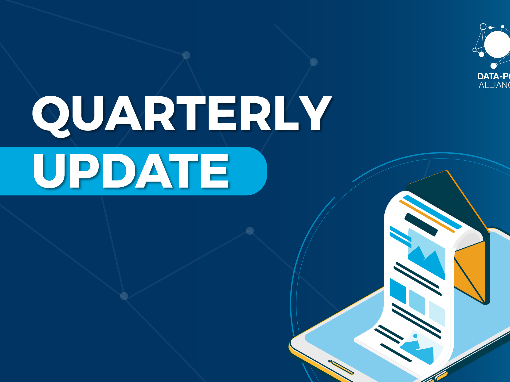DISCUSSION PIECE

Africa’s GDP is poised to grow exponentially in the next decade. According to the African Development Bank, GDP growth is expected to rise by 3.4% in 2021, an increase from 2.1% in 2020. Despite this anticipated gain, the continent still faces numerous challenges. Although hunger, malnutrition, extreme weather events, water scarcity, food insecurity, injustices, inflation, and conflicts remain constant, poverty is at the heart of Africa’s numerous interconnected and complex challenges, and therefore requires a strong response. While emergency food aid, for example, has been viewed as a key response strategy to poverty, often described as a “silent killer”, it has increasingly been seen as an inadequate and short-term solution. Subsequently, many development practitioners believe that the need for emergency aid can be eliminated if and when the right mechanisms are instituted. To decrease the impact of poverty, cash-transfers (CT) have emerged in recent years as an important strategy and policy focus, particularly in Sub-Saharan Africa, as a weapon of war against this silent killer.
The Poverty Debate in Africa
Amid Africa’s constantly evolving poverty situation, two arguments have reshaped the global poverty debate. The first is that CTs are a proven intervention to wipe poverty from the face of the earth. In support of this assertion, The Brookings Institution reported that it will require US$70B in cash transfers to eliminate poverty in the region. The second, opposing view is that, while CTs may be an effective tool for curbing poverty, impact actors and development practitioners doubt the effectiveness of such intervention. It is believed that if it works, its impact will be minimal, or even detrimental. Dambisa Moyo, in her book “Dead Aid”, pointed out that this situation only creates dependency syndrome. Evidence from Blattman and Ralston also revealed that the provision of microfinance, blended with skills training, has done little to reduce poverty.
The Pros and Cons of Cash Transfers
Cognizant of this, it is tempting to believe that CTs might not be an effective solution to eliminating poverty. As the “Africa poverty solution” saga continues, there has been increasing concern that poor people who receive these interventions will do nothing to help themselves. These actors continued to emphasize that it is better to “teach a man how to fish than to provide him a fish”, as the proverb goes. In this narrative, evidence is drawn from numerous sources, offering insight into whether cash transfers are effective or detrimental to the alleviation of poverty in Africa.
Firstly, let’s look at CTs in general, which raise many questions. What are they? What are the mechanisms for delivering CT programs, and what are the vehicles for accelerating them? What are the impacts of these programs, if any? CTs are a direct transfer of money to eligible recipients and can be either conditional or unconditional. Unlike conditional cash transfers (CCT), unconditional cash transfers (UCT) have been widely adopted as a tool for social protection in fragile economies. In any CT program, there are criteria for selecting and enrolling beneficiaries, primarily the beneficiary’s economic situation. The simplest and most common criterion is that those who live below the poverty line, defined as less than US$1.90 a day, are eligible to be enrolled.
CT Evidence
With the increase in the pool of eligible recipients in Africa (and other continents), many institutions have emerged to implement these programs, including GiveDirectly (GD), an American Philanthropy Organization which has recently become the leading vehicle for accelerating cash transfer programs. GD has conducted several randomized controlled trials (RCTs) in Africa to determine the effect of CTs on income, health, and several other indicators to determine their effect on poverty eradication. Evidence from some of these RCTs and CT programs shows that CTs are indeed a potential tool, given that CT households experienced an increase in investment by 58.3%, a monetary value of US$278.52 in assets. The possible cause for these benefits is that monetary empowerment places households in a stronger economic position, enabling them to offset medical and educational expenses. Interestingly, CT recipients increased consumption by 23%, which is equivalent to US$36.18 per month. Beneficiaries also have higher chances of consuming diverse food groups. Based on these findings, it is clear that CT is well-suited for enhancing the food and nutrition situations of households, which is a proxy measure of wellbeing. In real terms, this economic empowerment program has a reduction effect on poverty.
Despite these gains, the CT program has not led to improved welfare for the poverty-stricken masses in all cases. While it is true that CT households experienced increased investments in livestock and non-agricultural businesses by 34%, estimated profits remained unchanged, indicating that CT does not always contribute to profit on investment.
Aside from evidence from the famous GD programs in Africa, Bastagli et al. (2016) in their work “Understanding the Impact of Cash Transfers: The Evidence” reviewed 20 studies and related articles on the benefits of CTs, of which only 13 showed an increase in school attendance. It is important to note, however, that an increase in school attendance does not mean an increase in learning outcomes and thus be inferred that educational attainment is an indirect measure of economic growth.
Conclusions
Based on the results of these studies, we can approximate that while CT might be working in other areas, it has had little effect on literacy and numeracy gains, and therefore breaking the poverty traps. Surprisingly, although CTs have demonstrated an increase in expenditures on food and durables, evidence from other RCTs has found that this did not translate into reduced poverty rates in all cases. About a third of the evidence drawn from these studies did not find a significant impact. This could be attributed to the transfer value in question, or not being received over a long enough period of time.
With regards to these pieces of evidence, it is important to note that cash transfers have had some impacts on poverty reduction, although the extent of these impacts has varied by indicator (and also regionally). While it is true that it has had less impact on poverty, the hard truth is that the effectiveness of this program depends on the context. Therefore, more pieces of evidence are needed to holistically resolve this global poverty debate.


![M002 - Feature Blog Post [WEB]](https://datapopalliance.org/wp-content/uploads/2025/10/M002-Feature-Blog-Post-WEB.png)






